
Related
Now in its fourth week, the Occupy Wall Street encampment has attracted thousands of demonstrators who continue to tackle the challenges of self-organizing and building a movement. As their numbers swell and the media debates who they are, the Democracy Now! team packed up our gear and headed to Zuccotti Park in Lower Manhattan to hear people speak for themselves. We first talk to Justin Wedes, an organizer with Occupy Wall Street. He describes how New York City police have arrested people for peacefully demonstrating and exerting their free speech rights. “The reaction has been—and I think the whole world sees it now—that every time that you try to silence peaceful protests, you just get an explosion of new support. And I think that’s what’s happened. And it really bares sort of naked the truth about who the NYPD serve and protect. And if that’s not the people… then we have a problem.” [includes rush transcript]
Transcript
AMY GOODMAN: Now in its fourth week, the Occupy Wall Street protest that began in a public square in Manhattan’s Financial District has grown into an international movement. Monday saw the largest police crackdown on Occupy-related encampments to date with police in Boston raiding a downtown greenway near where activists had been camped out for a week. Witnesses say members of the group Veterans for Peace were beaten as they stood in front of the officers. Scores of people were arrested, their tents and belongings seized.
Meanwhile, in Chicago, thousands of people marched through the streets Monday chanting the Occupy Wall Street movement’s signature rallying cry, “We are the 99 percent.” At least 26 people were arrested after they linked arms and refused to move from a city street. Demonstrators also rallied in front of two financial industry-related events held by the Mortgage Bankers Association and the Futures Industry Association.
Meanwhile, here in New York, the thousands at the Occupy Wall Street encampment continue to tackle the challenges of self-organizing. Well, as their numbers swell and the media debates just who they are, the Democracy Now! team packed up our gear yesterday afternoon to hear people speak for themselves.
REBEL DIAZ: We the 99, the 99, the 99 percent. We here, we arrived, and we came to represent. Yo, we the 99, the 99, the 99 percent. We here, we arrived, and we came to represent, for the people…
AMY GOODMAN: This is Democracy Now!, democracynow.org, The War and Peace Report. I’m Amy Goodman. And we’re at Liberty Plaza, what was Zuccotti Park. It’s the corner of Liberty and Broadway. About a thousand people are packed in. It’s about 4:30 on Columbus Day, what many people call Indigenous Peoples Day. There’s going to be a forum on that very issue. But there are so many teach-ins that are taking place through the day.
I’m joined right now by Justin Wedes. Justin, why don’t you introduce yourself?
JUSTIN WEDES: Hi, everybody. My name is Justin. I’m an organizer with the New York City General Assembly and one of the folks who’s been out here since day one at Liberty Plaza.
AMY GOODMAN: So, why don’t you describe the scene for us and talk about how this whole encampment began? You’ve been here from the beginning.
JUSTIN WEDES: That’s right. So, the original idea was put out by Adbusters, a culture jamming magazine, to amass in Lower Manhattan 20,000 people. And in the—you know, the first day, we had a couple thousand people come out to the bull. We met out there. And then we had to move. We had to move somewhere. The police were starting to kettle us, kind of make us nervous. And we had the idea to do a general assembly, which we had been already doing for three months in the planning process of this, in Chase Plaza. Unfortunately, Chase Plaza had been completely barricaded. And so, we had to find an alternate location, so we decided on Zuccotti Park sort of on the run. And we came over here.
There were probably that first night around a hundred, less than a hundred people who slept out the first night. And, you know, in the subsequent days, we had a lot of interactions with police. It was raining a lot. We had to put up tarps. We had put up tents at one point. And they—
AMY GOODMAN: And what was the rallying cry?
JUSTIN WEDES: Well, the rallying cry was “Occupy Wall Street.” The idea was to come down here to make your voice heard about the injustices of Wall Street and the financial system. And the idea just spread like wildfire. And it was always understood that the process was always going to rule. The process of building consensus and arriving at our demands, at our action plan, that has always been the driving factor here. And so, we are still constructing, every night in our general assemblies, still constructing that consensus.
AMY GOODMAN: Explain the concept of General Assembly.
JUSTIN WEDES: So, General Assembly is an open, horizontal, leaderless process by which we can arrive at decisions, at demands, at action plans for making change in our country. And it’s consensus-based, which means it’s not just up-or-down vote. When 51 percent of people vote on something, the other 49 are suddenly sort of silenced in a way. Consensus works differently. It says that we can, if we are trying to, we can work together and come to agreement that everybody can feel good about. And so, that process, which is very powerful when you have good facilitation, when you have people who want to agree, who want to find unity and solidarity, that is the process that’s guiding it. Every evening at 7:00 p.m., we assemble. We’ve had assemblies of thousands of people here. We’ve had—using the people’s mic, so no sound amplification at all.
AMY GOODMAN: Explain the people’s mic.
JUSTIN WEDES: The people’s mic is basically a peoples amplification system. No power, no electricity. I say something or somebody says something, and then it’s repeated by the people around you. And so it’s amplified. Your voice is amplified. And in a way, it’s the most sort of democratic way to amplify sound, because the power of the message, the gain of that microphone, is actually determined by the power of the message. You know, so when people say things that are powerful and really move our movement forward, they’re amplified, literally, physically, by the people around us.
AMY GOODMAN: You are part, Justin, of the social media team. Explain what that means and how the media, the internal media of Occupy Wall Street, is functioning here.
JUSTIN WEDES: Yeah. So, basically, throughout this process, we understood the importance of having an independent media center—in other words, of creating our own media. We could never rely on the mainstream media to depict us fairly. And we wanted to be the most sort of go-to, responsible, accurate depictors of what was happening and what is happening in this space. And so, from day one, we set up an Indymedia Center, which includes a live stream. We’re actually being live-streamed right now.
AMY GOODMAN: Explain how the police are operating, Justin. I think you’ve learned a lot about who the police are working for at different times, that you didn’t realize when you started.
JUSTIN WEDES: Yeah, I think that what’s been revealed in the last few weeks, and has become more and more evident, is that the police, who are really here—we pay them to keep us safe, all of us safe, collectively, you know, have at times—many times have been professional and courteous, but other times have been—have crossed the line, have arrested our people for peaceful demonstrations and expressions of their free speech, have, you know, really tried to silence this movement. And the reaction has been—and I think the whole world sees it now—that every time that you try to silence peaceful protest, you just get an explosion of new support. And I think that’s what’s happened. And it really bares sort of naked the truth about who the NYPD serve and protect. And if that’s not the people, if that’s not the people assembled here, if that’s not the local community, if that’s not the local businesses, all of the businesses, then we have a problem. We have to reconsider, you know, what our NYPD serves.
AMY GOODMAN: Now, we don’t know if there’s a connection, but we did learn that JPMorgan Chase gave the largest single contribution to the New York Police Foundation that they’d ever received in their history, something like $4.6 million. I don’t know if there’s a connection between that and Chase Square being closed off to you. But then you came here. And there are other police units that are, what, working for who?
JUSTIN WEDES: Well, so, essentially, we’ve learned in the past few weeks, but I’m sure it’s been known for a while, that Wall Street is a very securitized area. If you walk onto Wall Street, you know, even before September 17, there’s an immense amount of private security, from the establishments of the tenants and people in that area. What we’re learning now, what’s becoming apparent, is that NYPD also has a role there. And so, you know, there’s reports now that we’re hearing that NYPD has a unit, the Paid Detail Unit, that is actually hired to serve as private security for the New York Stock Exchange. You know, there’s a dangerous sort of fuzzy line there as to where taxpayer money is being spent for security and public safety and where, you know, private money should be spent.
And, you know, in our opinion, what we’ve seen happen in the past few weeks on Wall Street with the over-barricading, the over-policing, streetcart vendors have been pushed out of that street. They’re losing business like crazy. Local businesses are also suffering. So we’ve started to partner with them to source our food and our supplies. You’re seeing local small businesses really hurting under these policing policies. So it brings up the question of who is being protected now. Who are we protecting, NYPD? We’re not protecting the streetcart vendors. We’re not protecting the local small businesses. You know, is it just the bankers? Is it just the hedge funders and the financial firms? Or does the NYPD have a responsibility, because they’re our—they’re our NYPD, to serve and protect the entire city?
AMY GOODMAN: Well, thanks very much, Justin Wedes, with the social media team here in New York.

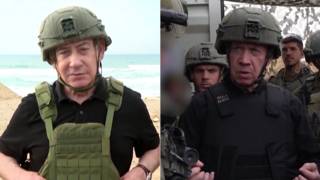
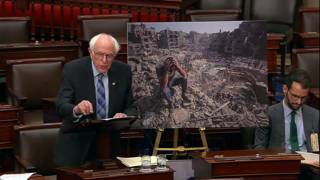
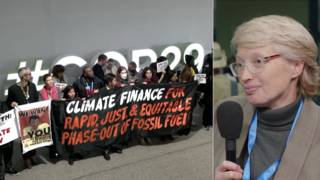
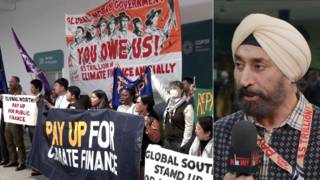





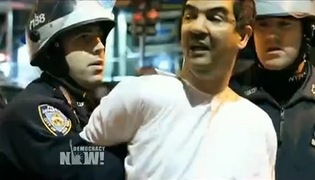
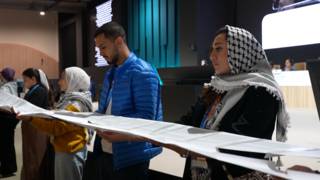
Media Options